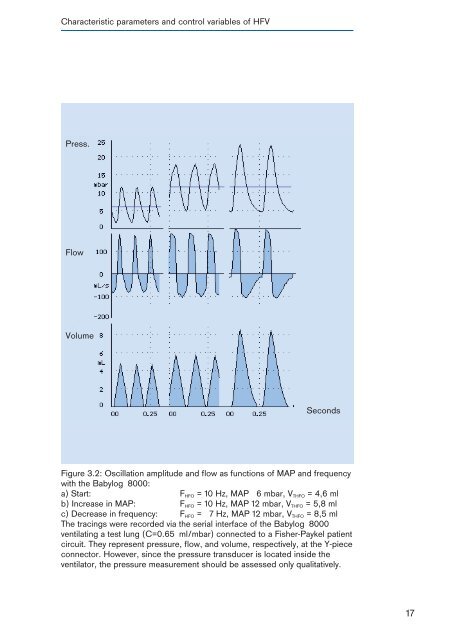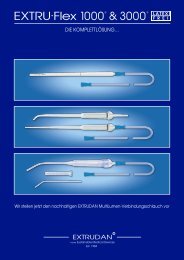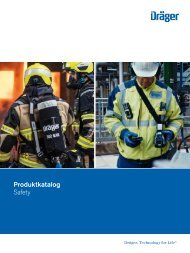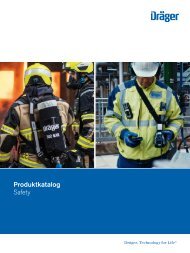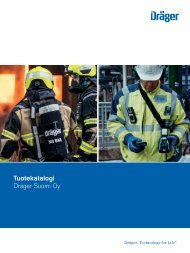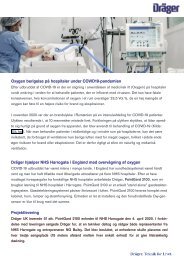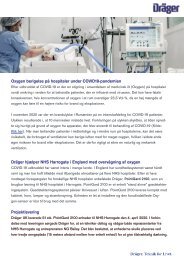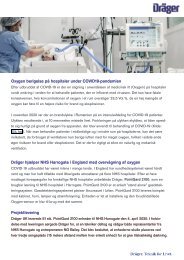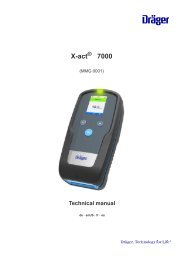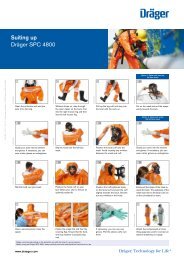High-Frequency Ventilation- Basics and Practical Applications
You also want an ePaper? Increase the reach of your titles
YUMPU automatically turns print PDFs into web optimized ePapers that Google loves.
Characteristic parameters <strong>and</strong> control variables of HFV<br />
Press.<br />
Flow<br />
Volume<br />
Seconds<br />
Figure 3.2: Oscillation amplitude <strong>and</strong> flow as functions of MAP <strong>and</strong> frequency<br />
with the Babylog 8000:<br />
a) Start: F HFO = 10 Hz, MAP 6 mbar, V THFO = 4,6 ml<br />
b) Increase in MAP: F HFO = 10 Hz, MAP 12 mbar, V THFO = 5,8 ml<br />
c) Decrease in frequency: F HFO = 7 Hz, MAP 12 mbar, V THFO = 8,5 ml<br />
The tracings were recorded via the serial interface of the Babylog 8000<br />
ventilating a test lung (C=0.65 ml/mbar) connected to a Fisher-Paykel patient<br />
circuit. They represent pressure, flow, <strong>and</strong> volume, respectively, at the Y-piece<br />
connector. However, since the pressure transducer is located inside the<br />
ventilator, the pressure measurement should be assessed only qualitatively.<br />
17


